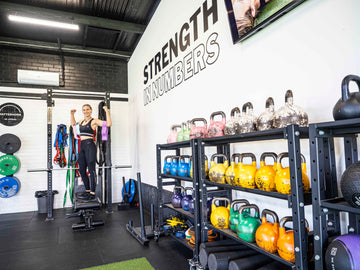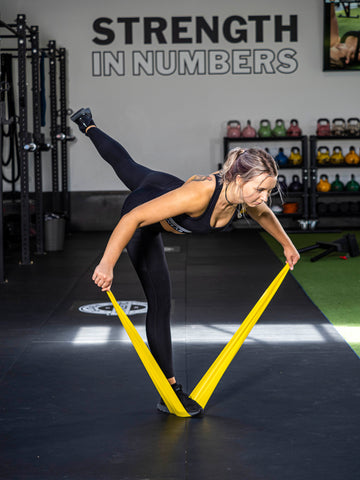At the gym, you can use elliptical trainers, free weights, and machines. Meanwhile, resistance band training is a convenient, portable, and low-cost alternative to traditional strength training. After all, you can't bring all of that gear on vacation, and it won't fit in your house. Resistance bands, on the other hand, are portable.
Resistance Bands: What to Know
Resistance bands are perfect for strength training because they are portable and can be placed in a drawer at home. Furthermore, they are much less expensive than acquiring your own weight equipment, as opposed to dumbbells, barbells or kettlebells.
Despite this, elastic resistance bands have a few drawbacks. Their resistance is one of the most crucial. The resistance provided by heavy dumbbells, barbells, or kettlebells is superior to that generated by even the strongest bands.
Resistance bands alone may not be enough to improve a serious lifter's performance. While elastic resistance bands can be used to simulate most dumbbell and barbell workouts, they cannot be used to simulate power lifts or kettlebell routines. For novices, stretchy resistance bands are less intimidating.
Elastic resistance bands can withstand a lot, but they will eventually deteriorate due to wear and tear. Always inspect them before using them and discard any that show signs of cracking, breaking, or apparent fading.
Quick Resistance Band Exercises (Beginners)
To begin utilizing elastic resistance bands, follow these steps: Perform one or two sets of eight to twelve repetitions for each exercise at least once or twice a week. Before working out again, each muscle group should rest for at least one day.
1. Exercising for the Back
Elastic Band Pulldowns
Elastic band pulldowns work the main pulling muscles in your back and arms.
One hand holds both ends of the resistance band. Use a foam anchor to fix the band's midpoint over a doorway, or tie a knot at the band's midpoint and secure it into the doorway's top.
Kneel in front of the door, chest lifted and arms extended. Make sure your arms are outstretched and the elastic band is taut.
Pull your arms in front of you, elbows first. Return to the starting position softly to complete the rep.
2. Exercising for the Chest
Resistant Band Pressing
Consider using resistance bands to mimic a chest press to work the primary pushing muscles of the chest, triceps, and shoulders:
Wrap the band around your shoulders. The ring should terminate behind one of the armpits.
Bend your arms out to the side slightly, holding one end of the band in each hand. Keep your hands and elbows in a straight line and tighten your grasp on the band.
Straighten your arms and stretch them exactly ahead of you, in front of your shoulders.
Return to the starting posture by bending your arms slightly.
3. Exercising for the Legs
Resistance Bands Squats
Squats are a near-ideal lower-body exercise. Beginners should focus on perfecting their squat form before adding more resistance. When you're ready, add the resistance bands.
Pin the central portion of the resistance band securely beneath both feet.
Take hold of each end of the resistance band. Place your hands at your sides, straightening them.
Adjust the band's grip until the "down" position has a slight tension.
To finish one repeat, you must stand up to the band's opposition.
Conclusion
Strength training has never been this easy and convenient. Wherever you go, you can take resistance bands with you so you never miss out on days of your fitness routine. With this easy equipment, you’ll reach your fitness goals in no time!
POWERBANDS® offers a varied collection of the best resistance bands that are perfect for any fitness level. Shop our products today!








